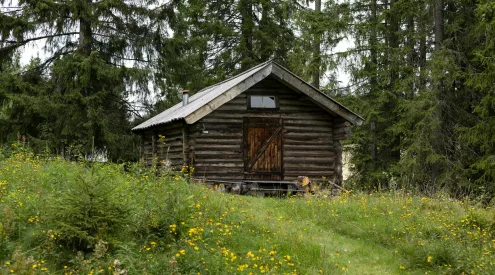It may be January and many people are back at work, but it’s still peak tourist season for most of Southern Africa. Congested, bumper-to-bumper traffic along national roads, booked-out and over-populated holiday destinations and baking hot, crowded beaches are pretty much guaranteed. If you’re looking to get away from the madness, Open Africa has put together a list of our top five self-drive travel routes to explore this summer.

Rixile Bush to Beach Route takes travellers on a different route to Mozambique, adding an authentic flavour to the journey.
Many people flock to Mozambique over the festive season, so if you’re looking for an alternative route to get there, check out the Rixile Bush to Beach Route. The route starts at Phalaborwa, and leads through the Greater Limpopo Transfrontier Park, to the towns of Massingir, Chókwe and Xai-Xai, before heading north to the tourism centres of Inhambane and Vilankulo. A new concept in tourism, the bush to beach experience provides travellers with the opportunity to have the best of both worlds. You can spend a few days in one of Southern Africa’s most renowned game parks, before reaching the pristine beaches of Mozambique, which offer activities such as scuba diving, snorkelling, angling and whale-watching. Read more about the route here.

The Garden Route is an obvious choice for many people during the summer months.
2. Coastal Route
An obvious choice for many, the Coastal Route covers the entire length of the Eastern Cape Province stretching across a number of districts. The route starts at Tstsikamma and includes famous attractions such as the Tsitsikamma National Park, Addo elephant National Park, the beaches of the Sunshine Coast, the rich heritage of Frontier Country, the picturesque village of Hogsback and the Amatola Mountains before reaching the unspoilt beaches of the Wild Coast. travellers but definitely one of the busiest areas in South Africa over the festive season. Read more about the route here.

The Southernmost Route is fantastic for a more lazy, laid-back escape.
3. Southernmost Route
A slightly less-crowded option is the Southermost Route is set in the south Western Cape region of South Africa and as the name suggests, the key feature of this route is South Africa’s Southernmost tip – Cape Agulhus. The area is geographically striking, as it is situated at the very tip of the African continent where the Indian and Atlantic Oceans meet. The area boasts the unique floral wonders of the Cape floral kingdom and historical sites of note include the Khoi-Khoi Caves and old fishing villages that have survived to this day. The rocky coastline offers anglers and divers unending pleasure and the seas and rivers are favourites with fishing and boating enthusiasts. Read more about the route here.

The Karoo Highlands Route may be boiling hot, but it's a great bet if you're looking to escape the hustle and bustle.
4. Karoo Highlands Route
If you’re serious about getting away from the hustle and bustle of the city over the festive season, then back your shorts and head deep into the Karoo Highlands to get away from it all. It may be scorching hot, but there won’t be many crowds and if you can find an oasis or two, this route ranks high up on our list. The route covers small Karoo towns such as Matjiesfontein, Sutherland, Fraserburg, Williston, Carnarvon, Loxton, Victoria West and Beaufort West and is commonly referred to as the Great Karoo. Read more about the route here.

The Xairu Blue Crane Route is a great way to link up with Garden Route this holiday
5. Xairu Blue Crane
The perfect destination to link more off-the-beaten-track destinations to the garden route. It is located in and around the town of Heidelberg, which is about 276km east of Cape Town on the N2 national road. Heidelberg is fondly known as the ‘gateway to the garden route’. The route covers an area stretching from the impressive Langeberg Mountains, through rolling hills to the coastal dunes. It is, however, mostly farmland, mostly comprising wheat and canola fields – artificial habitat that has become the home of South Africa’s national bird, the blue crane. By simply driving along the roads in the area, one is likely to see flocks of blue cranes – quite often happily amongst flocks of ostriches (ostrich farming is also one of the main income generators in the area). Read more about the route here.















